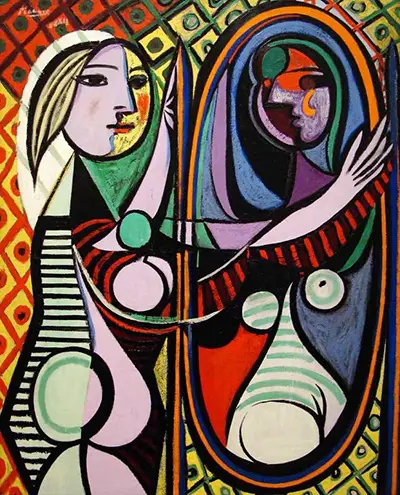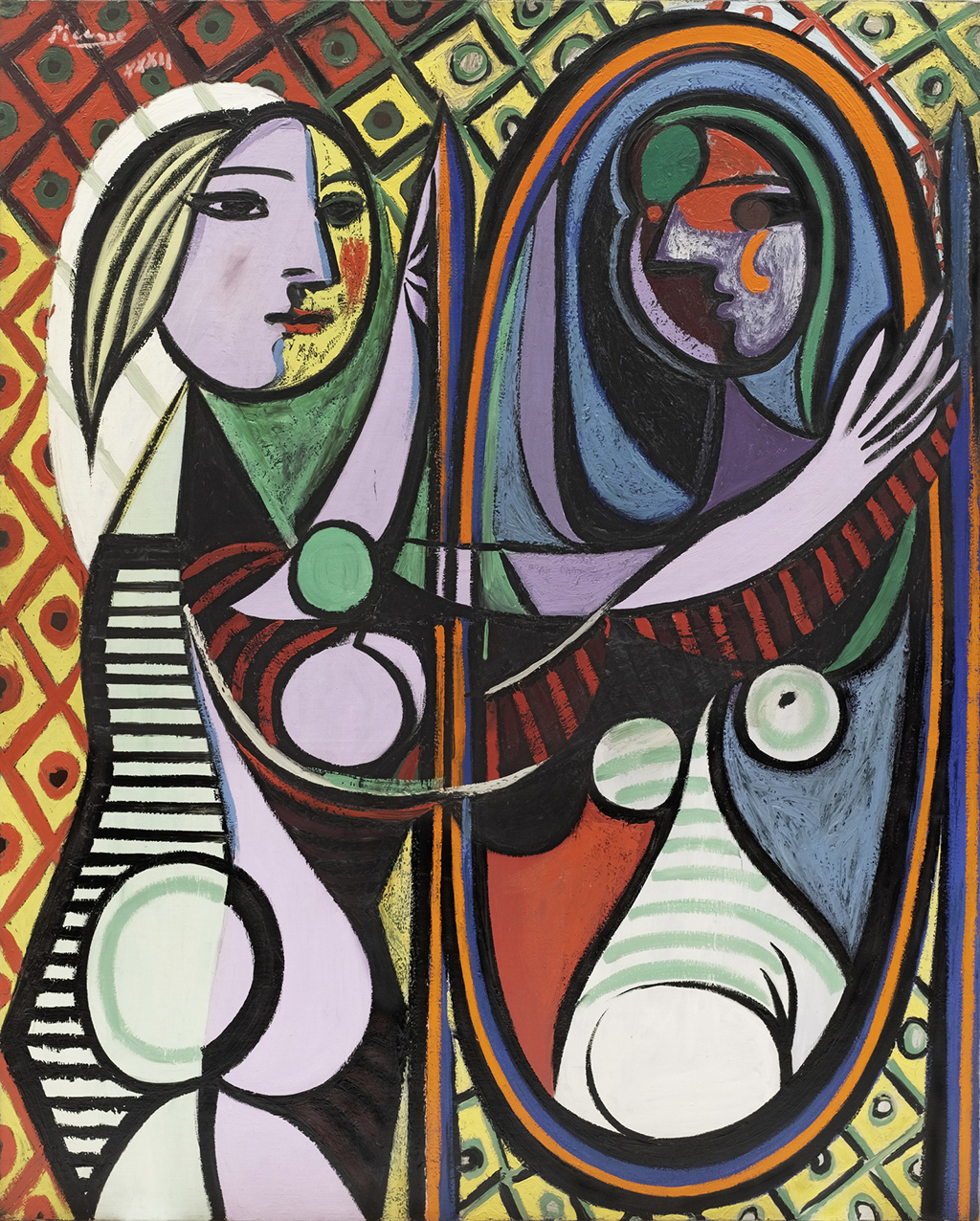Marie Therese Walter was frequently used by Picasso as a portrait model throughout the 1930s. This artwork is the best known of all those in which she was used. Marie Therese Walter made a significant impact on Picasso's life and work. This painting displays jewel-like colours and clear, sharpened forms which lift this portrait into something impactful and memorable. Picasso was predominantly working in a cubist style during this period of his life, and would have received and given inspiration to other members of this movement at that time. Walter was to model throughout the 1930s for Picasso and was called on frequently. Throughout his life Picasso depicted his preferred muses in his art, be it sketches, paintings or sculpture.
Notably Juan Gris and Georges Braque were closely connected to Picasso's Cubist art. The artist uses a complex, eye catching background in this painting which clearly contrasts to portraits like Blue Nude and The Old Guitarist where the focal point was entirely the subject. Some have placed this painting under the umbrella of Modernism. This group included several of the art movements in which Picasso was involved over the course of his extended career. Girl Before Mirror, itself, was painted in March 1932 but the Modernists span a long period both before and after the 1930s. One such prominent member was Georgia O'Keeffe, with abstract flower paintings like Jimson Weed and Oriental Poppies.
An augmented reality with abstract shapes and lines formed much of the styles found within this group of movements. It's role was critical in the development of modern art and Picasso was a significant influence with in it. The purpose of Girl Before Mirror has been much discussed. In all likelihood it serves as a comparison between how a woman views herself, and how she is seen by everyone else. The original painting can now be viewed at the MoMA in New York, US. It is amongst the finest artworks in the huge collection of this international art insitution. MoMA host a good number of Picasso work besides just this, covering both oil paintings as well as sculpture. Some of the more notable pieces will occasionally be lent to other locations around the world, so it is well worth checking first if you are visiting to see specific artwork. This painting was featured in a prominent Tate Modern exhibition in London alongside other significant artworks from 1932 including Le Rêve and Nude Woman in a Red Armchair.
This imaginative composition features a young woman looking at her own appearance within a mirror, which is a part of a larger piece of furniture that stretched across most of the vertical length of the canvas. To see a cubist interpretation twice together is highly exciting, and the overall nature of this busy is bright and very busy. Even the tiled background is vibrant, adding plenty to the artwork itself. The palette is bright and contemporary, but most elements are not mixed in many varieties of tone, but rather added as flat colours each time. This ensures a clearer finish, almost akin to illustration where blocks of colour is the most common approach. See her face, stomach and arms, for instance, as these are all in the same tone of light purple. Elsewhere we find yellows, reds, greens, reds, blues and purples. This vibrant colour is entirely in line with contemporary art and also retains a great popularity today with many looking to appreciate positivity within art in a way that can excite them and also lift their own mood. Picasso was versatile enough to work this way as well as more negatively at different stages of his career.
The style in which this girl is formed bears a connection to traditional African art and this is no coincidence as we are well aware of the artist's admiration for work from that region. African masks were popular within Europe at this time, with many collecting them thanks to a connection to the imperial era. Cubism was perhaps Picasso at his best, both in terms of abstraction and also the bright palettes. Whilst he worked in other ways, this approach seems to have struck the strongest chord with the public. You will find each of these items regularly chosen as art prints as a result of that popularity, which continues to be strong today. Whilst Girl before a Mirror was completed nearly a century ago, it still feels entirely fresh and modern, which underlines how far ahead of his time the artist was, as well as how painting has not necessarily moved on that far in the years that have passed since.
Visitors to MoMA in the US will be able to enjoy this piece in person, in all likelihood, but always check ahead just in case it has temporarily been loaned or perhaps taken off display for the preservation work. Either way, there is still plenty else to check out here too. They specialise in modern art, though their collection is mainly ranging from around the mid 19th century up to the present day. It provides a fairly comprehensive survey of European art during this period, touching on all of the major movements and also including the top names in each of them. Picasso himself was involved across different movements, and so his career helps to draw all manner of other artists together. Les Demoiselles d'Avignon, also from Picasso, is amongst their biggest highlights and you can also find related artists featured here such as Braque, Gris as well as Vincent van Gogh's The Starry Night from 1889 which we all instantly recognise.



